Nine seasoned hikers die inexplicable deaths
One January 25, 1959, nine hikers from the Soviet Union's Ural Polytechnic Institute set off from the city of Sverdlovsk (1,200 miles east of Moscow) on a three-week cross-country skiing expedition to the nearby Otorten Mountain range. Led by enthusiastic 23-year-old Igor Dyatlov, the group boarded a train in Ivdel (in the northern province of Sverdlovsk Oblast) and headed for the northern Urals. The team would never make it to their destination (nor ever be seen alive again) and their enigmatic deaths prompted an investigation which revealed many mysterious and still-unexplained anomalies. Some were found wearing only underwear, some with only one shoe or one sock, and some wearing the tattered remains of other party members clothing. Despite no evidence of a struggle, some had crushed skulls, broken bones, massive internal injuries, and missing eyes and tongues. All we know for certain is that their last moments on earth were filled with hopeless terror.
The Dylatov expedition
The goal of the Dylatov expedition was to reach Ortorten, a mountain about 10 miles north of where their bodies were found. The route was ranked a "Category III", the most difficult, but all members of the expedition party were seasoned mountaineers - one ski instructor, three engineers, and seven environmental students. Ten people originally set off for the mountain but one, Yuri Yudin, was forced to go back because of illness. Yudin returned to the closest outpost (the settlement of Vizhai) while the nine remaining expeditionary members continued on their fateful journey to the nearby Ortorten mountain range.
We know from diaries and found camera footage that on January 31, 1959, the group reached the river Auspia. Arriving at the edge of a highland area, they cached food and equipment that would be used for the trip back and began to prepare for climbing. The following day, the hikers began their move through the pass (which would later come be known as the Dyatlov Pass) planning to get over the pass and make camp for the night on the other side. However, worsening weather conditions caused the party to accidentally veer off course travelling slightly west of their intended route. When they recognized their mistake, the group decided to stop and set up camp on the side of the mountain at about 3,600 feet. A photo from a roll of film found at the camp shows the expedition members setting up camp around 5:00 PM on February 2, 1959. The film and journal entries showed the group was in good spirits, playfully producing their own faux newspaper while they readied for sleep. The next day they planned to continue on to the mountain, six miles to the north.
Nine hikers fail to reach their destination - search and rescue operation begins
The team was scheduled to arrive in Vizhai on February 11, 1959 and their first order of business would have been to send telegrams to their loved ones announcing the success of their mission. By February 12, nobody had heard from the group. It was not unusual for an expedition to be delayed by a few days but by February 20, families recognized that something had gone terribly wrong. At the insistence of family members, the Ural Polytechnic Institute sent the first rescue groups consisting of volunteer students and teachers. A few days later, Russian army and police forces, using planes and helicopters, joined the search efforts.
On February 25, 1959 a pilot spotted something curious on the ground and the next day, search teams moved to the area where they found an abandoned and badly damaged tent on the eastern slope of Kholat Syakhi, a mountain known to indigenous Mansi tribesmen as the "Mountain of the Dead". Oddly, searchers found that the tent had been cut open, from the inside, as if the occupants were frantically trying to escape some sort of horror inside the tent. Fellow Polytechnic student Mikhail Sharavin was among the search and rescue personnel. He described what they found that day:
The first two bodies are found"We discovered that the tent was half torn down and covered with snow. It was empty, and all the group's belongings and shoes had been left behind."
Footprints, some bare feet and in one case, a single shoe, led searchers down the hill, towards the edge of nearby woods. The footprints ended about 550 yards away from the tent but a continuation along the same line led searchers to the forest edge where, under a large cedar tree, they found the remains of a fire along with the first two bodies, those of Yuri Krivonischenko and Yuri Doroshenko. Both were barefoot, wearing nothing but underwear. Searchers puzzled why the men, who were well within range of their tent, were naked and shoeless. Their hands were burned and above the bodies, about 15 feet off the ground, the branches of an old pine tree had been snapped off. Forensic tests would later reveal skin embedded within the tree's bark indicating the two men had frantically attempted to climb the tree. What were the men, who had time to stop and build a fire, so frightened of?
Three more bodies found
After the discovery of the first set of bodies, searchers focused their efforts on the area between the tent and forest edge. Soon three more corpses were discovered - the bodies of expedition leader Igor Dyatlov, Rustem Slobodin, and Zina Kolmogorova, each separated by about 200 yards and running along a line that suggested they were attempting to return to the tent.
Dyatlov's body was found about 900 feet away from the first set of bodies (closer to the tent). His corpse was found lying on its back, one hand clasping the branch of a small birch tree and the other arm, frozen in ice, covering his head and face as if he died protecting himself from some unknown assailant.
Rustem Slobodin's body was found not far from the tent, lying face down, half buried in snow. Slobodin's skull bore a inexplicable deep fracture.
Kolmogorova's corpse was found furthest from the others. There were traces of blood around her body but there was no evidence of a struggle in the area.
Two months later, the remaining four bodies are discovered
It took more than two months to find the remaining four bodies. Once the spring thaw set in, on May 4, 1959, the bodies of Ludmila Dubinina, Alexander Kolevatov, Nicolai Thibault-Brignol, and Yuri Yudin were discovered under 12 feet of snow, in a ravine further into the woods. Unlike the others, their bodies were fully clothed - and all appeared to have died from massive internal injuries.
Medical examination reveals inexplicable injures and highly unusual circumstances
Unusual injuries
A medical examination of the bodies revealed strange anomalies - many of the bodies bore odd injuries that medical examiners could not explain. Thibault-Brignol had major skull damage and both Dubinina and Zolotarev had major chest injuries - chests crushed inward with enough force to shatter ribs and rupture internal organs. Despite the massive internal injuries, their bodies exhibited no external bruising or lacerations. Dubinina was found with her head tilted backward, mouth wide open as if screaming. Her tongue had been ripped out by the root and her eyes removed from the sockets.
The victims that suffered massive internal injuries were most puzzling to investigators. Doctors estimated the force required to inflict such damage would have been tremendous - comparable to a major car crash - and they could not explain how the victims sustained such major internal injuries with no signs of external wounds. It was if they had been crushed by a high level of pressure or squeezed in the arms of a tremendously powerful entity.
Victims partially dressed
Although the temperature was brutally cold with a winter storm was brewing in the area, the dead were only partially dressed. Some of them only wore a single shoe while others had no shoes or wore only socks. Some were found wrapped in snips of ripped clothing that seemed to have been cut and removed from other victims. Dubinina's foot was swaddled in a tattered piece of Krivonishenko's wool pants and Zolotaryov was found wearing Dubinina's faux fur hat and coat. Investigators did not believe "temporary insanity" would have caused them to rip off their clothes in the frigid cold - only a few hours earlier they had been alert enough to prepare and eat their own meals (autopsy's showed they had eaten their last meal 6-8 hours before death).
Although initially a local tribe was suspected of the murders, there were no indications that other people had travelled nearby or in the surrounding area. Tracks from the camp showed the expedition members left the camp in an orderly fashion - in various directions away from their tents. Oddly, forensic radiation tests showed high doses of radioactive contamination on the clothes of some of the victims (admittedly, Russian military surplus climbing gear at the time could have already been contaminated when purchased by the expedition team).
At the victims' funerals, family members noted the bodies bore several odd characteristics. Some noted that the victims' skin was an odd orangish color. Many noted that the victims' hair had turned a dull shade of gray.
Yudin, the tenth skier who was forced to turn back and hence, the only survivor from the group, once said:
The investigation concluded with no explainable reason for the hikers' deaths. The official conclusion - death due to "a compelling unknown force"."If I had a chance to ask God just one question, it would be, 'What really happened to my friends that night?'"
What killed the nine hikers at the Dyatlov Pass?
A timeline of events
From the discovered journals and rolls of film, and undigested food in the stomachs of the victims, investigators were able to piece together a very accurate timeline of events. They found that around 5:00 PM on February 2, expedition members set up camp on the slope of Kholat-Syakhi in order to shelter from the inclement weather (no explanation found for why they decided to set up camp on an exposed slope rather that detour ½ mile to a more sheltered forest area). Around 7:00 PM, the team ate a meal and began to settle down for the night. Photographs show a healthy group of youngsters, jovial even. The temperature was around 5 degrees F. Given the state of undigested food in their stomachs, forensic pathologists estimate that they died about 2-3 hours later, sometime between 9:30 PM and 11:30 PM. At that time, something frighteneded the team so badly that they burst from their tents, running in all directions. Some gathered about 900 feet away from the tent and started a fire in order to keep warm. Possibly they attempted to share clothing in order to keep warm and avoid a likely death from exposure. Regardless, some died from exposure right away. In a second round of terror, something frightened the team members again and they attempted to flee back towards the tent where they suffered massive internal injuries and met an inexplicable end.
Attack by Mansi warriors
One of the first theories proposed, and investigated by authorities, was that the group of nine hikers had been attacked by native Mansi tribesmen. Mansi are traditionally believed to be territorial - and savage. The theory proposes that the Mansi may have seen the expedition members as intruders into their sacred territory.
Investigators quickly determined Mansi had not killed the nine hikers. Firstly, the damage done to the bodies was inconsistent with an attack by a human. Secondly, no other sets of footprints were found in the area. Lastly, interviews with Mansi convinced investigators that they not only had not attacked the expedition members, but had met the team along the way and warned them to stay off the "Mountain of the Dead". In fact, Mansi, who would normally refuse to enter the "Mountain of the Dead" during the winter, graciously assisted authorities in the search and rescue efforts.
Russian missile explosion
Some have theorized that the hikers could have been unfortunate victims of a Russian military exercise gone wrong - an exploded nuclear missile could perhaps explain the high radioactive traces on some of the victims' clothing. In addition, later reports hinted that a great deal of scrap metal was found in the area. However, there was no damage to any of the surrounding trees or vegetation (other than broken branches from the tree the victims attempted to climb) and Russian records show no signs of a launch from Baikonur, the only site within range of the area where the expedition team died. Lending credence to the theory - much of the investigative reports have never been released to the public.
UFO - strange orange orbs in the sky
Coincidentally (or not), about 30 miles south of the mountain, another group of hikers reported seeing strange orange spheres hovering in the night sky to the north (in the direction of Kholat Syakhi) on the night of the incident. Around the same time period, additional reports of the strange spheres and discs emerged from various independent witnesses including meteorology and military officials. One wrote:
"We saw a shining circular body fly over the village from the south-west to the north-east. The shining disc was practically the size of a full moon, a blue-white light surrounded by a blue halo. The halo brightly flashed like the flashes of distant lightning. When the body disappeared behind the horizon, the sky lit up in that place for a few more minutes."
Avalanche on mount Kholat-Syakhl
Some have theorized that the members heard the telltale sounds of an avalanche and rushed from the tents to escape impending death. Others however, note that no rock nor debris was found clearly proving that no avalanche took place. In addition, the experienced team members moved no further than the treeline, an area that would have still been susceptible to a rushing wall of ice and snow. Finally, the massive injuries were far more severe than injuries sustained in an avalanche.
Russian Yeti
Some have proposed that the expedition members were victims of the infamous Siberian yeti, known as Almas or Menk. In this scenario, the scream of a Menk frightened the hikers who fled from the beast. Discovery Channel (admittedly a now-dubious source who often "makes up" news instead of breaking it) revealed in 2014 that large footprints had been found on the scene. One key piece of evidence that supports this theory is a piece of notepaper found with the bodies. Written in large, oversized letters, it read, "From now on we know there are snowmen."
The Dylatov Pass victims
Igor Alekseievich Dyatlov (Игорь Алексеевич Дятлов), the group's leader, born January 13, 1936
Zinaida Alekseievna Kolmogorova (Зинаида Алексеевна Колмогорова), born January 12, 1937
Ludmila Alexandrovna Dubinina (Людмила Александровна Дубинина), born January 11, 1936
Alexander Sergeievich Kolevatov (Александр Сергеевич Колеватов), born November 16, 1934
Rustem Vladimirovich Slobodin (Рустем Владимирович Слободин), born January 11, 1936
Yuri Alexeievich Krivonischenko (Юрий Алексеевич Кривонищенко), born February 7, 1935
Yuri Nikolaievich Doroshenko (Юрий Николаевич Дорошенко), born January 12, 1938
Nicolai Vasilievich (Vladimirovich?) Thibault-Brignol (Николай Васильевич (Владимирович?) Тибо-Бриньоль), born June 5, 1935
Alexander Alexandrovich Zolotariov (Александр Александрович Золотарёв), born February 2, 1921
Yuri Yefimovich Yudin (Юрий Ефимович Юдин), born 1937
Updates
January 12, 2016: The Russian mountain range has reportedly taken another victim. Tourists visiting Dyatlov Pass in the Ural Mountains this week discovered the body of a hiker on and reported it to emergency services. However, difficult weather conditions have so far made it impossible for authorities to reach the area and investigate the discovery.
Comment: Regarding this most recent event at Dyatlov Pass, the Russian Government has only said this about it:
The Russian government said that it would investigate the findings regarding a new dead body found at the notorious Dyatlov Pass, while dismissing allegations that the group which spotted it has lost contact.
Russia's Emergency Ministry denied that a group of hikers which on Friday spotted a dead body in the mysterious Dyatlov Pass has gone missing.
[...]
The group in question found the body of a man, estimated to be in his fifties by the hikers.
[...]
The head of the Dyatlov Group Memorial Foundation, Yuri Kuntsevich told Russian television that the missing man likely died from being stuck in thick snow after taking off his skis.
According to Kuntsevich, rumors of paranormal occurrences at the Dyatlov Pass led the dead hiker to visit Dyatlov Pass without preparation.
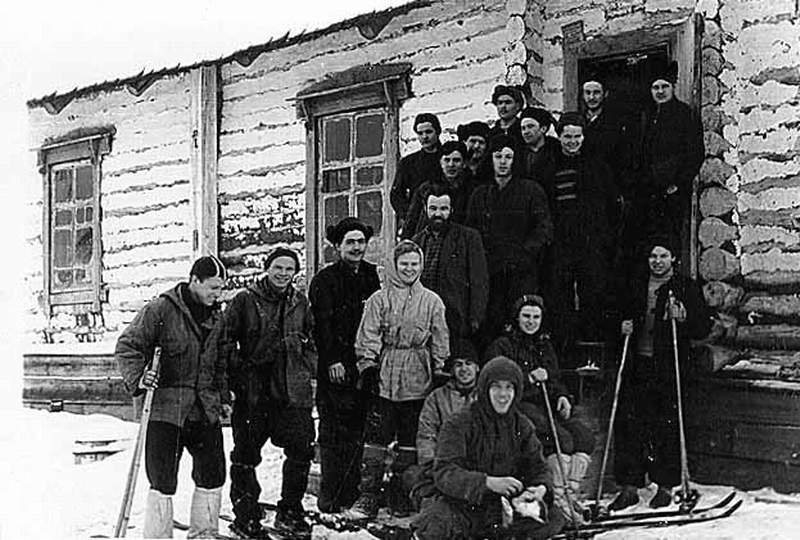
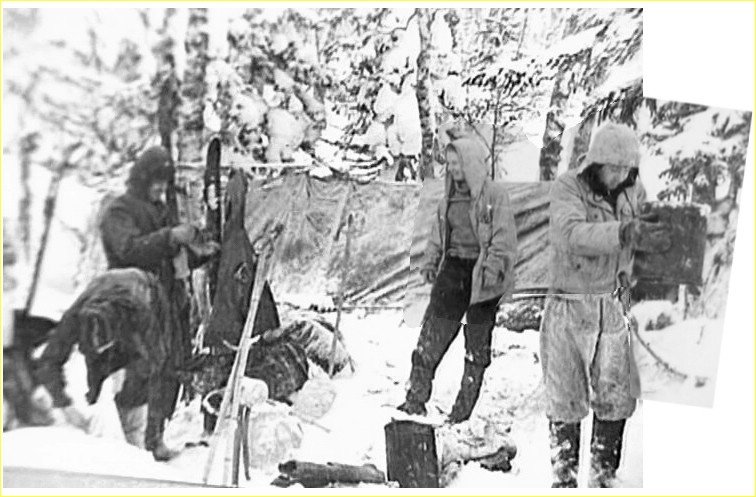
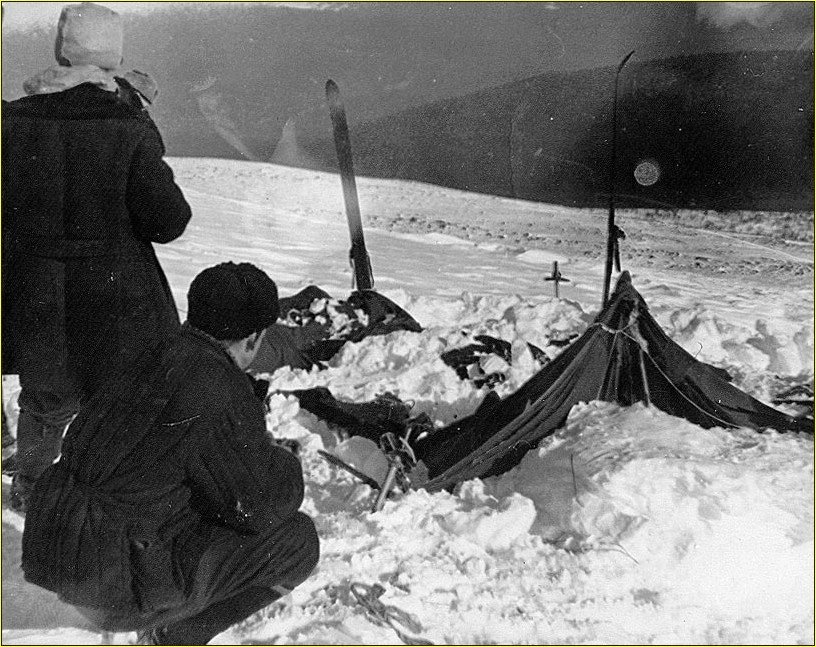
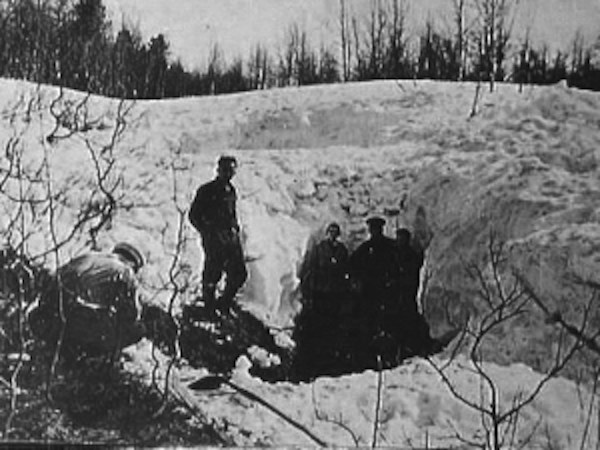
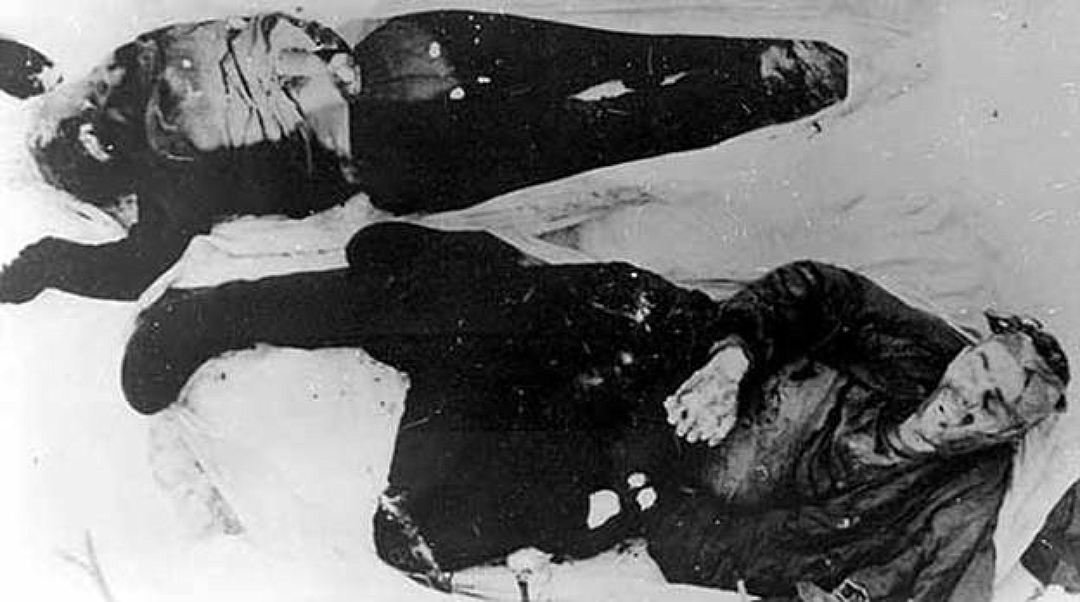
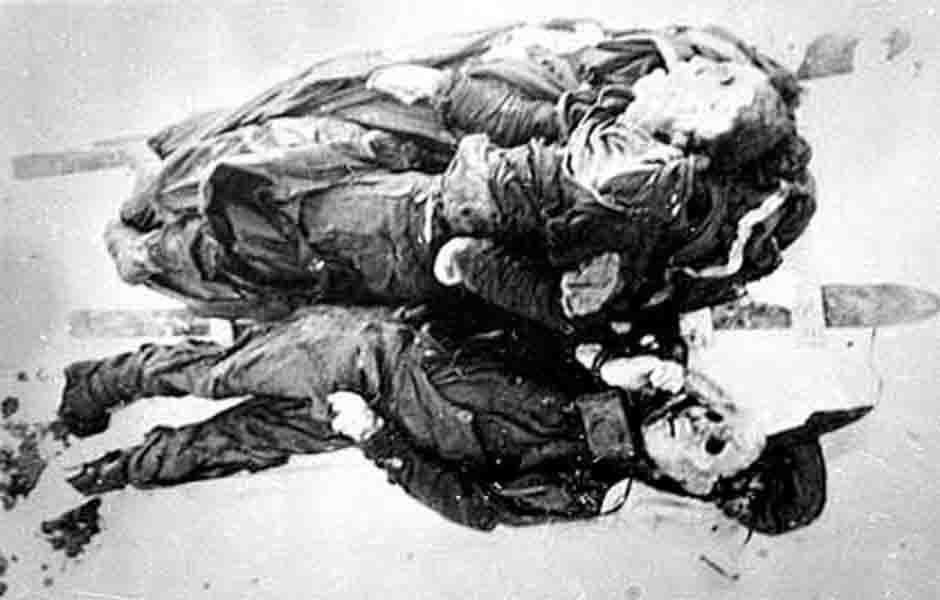
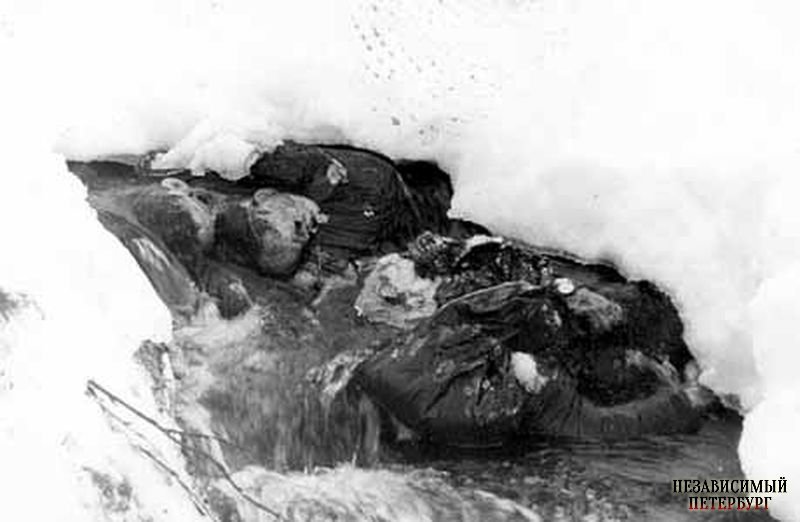

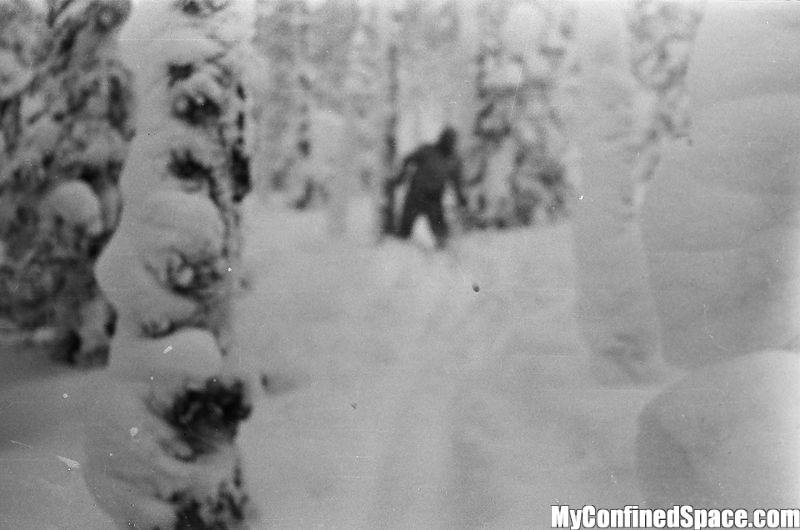



Comment: Unfortunately, there are many hundreds of stories throughout the world with similarities (as well as differences) to the tragic occurrences at Dyatlov pass. David Paulides, a former Police Detective has made it something of a mission to bring these cases to greater public knowledge in his Missing 411 series of books. He pays a great deal of attention to the anomalies, the unexplainable and inexplicable when recounting the events surrounding the dead and missing.
For further reading see: